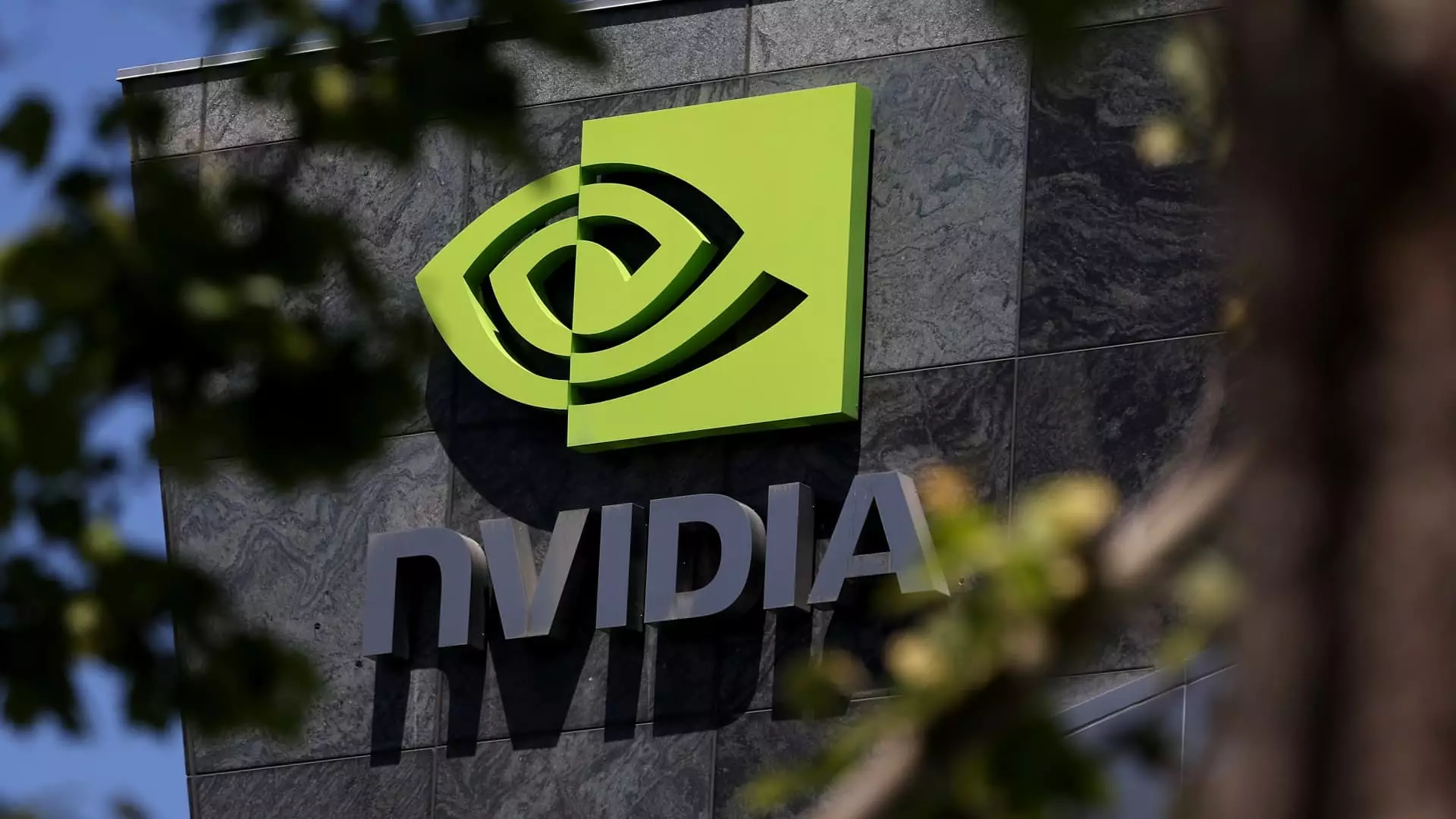Nvidia, a prominent beneficiary of artificial intelligence technology, recently reported impressive financial results. Following this announcement, the company’s stock price experienced a significant surge of approximately 20% in just three trading days. Year-to-date, Nvidia’s shares have more than doubled, marking a substantial increase of around 120%. With a market capitalization of $2.8 billion, Nvidia now ranks closely behind tech giants like Apple and Microsoft in the S & P 500 index. Some market watchers have even pointed out that Nvidia’s market value surpasses the combined valuations of Amazon, Walmart, and Netflix. However, amidst this exponential growth, concerns have emerged regarding the potential overvaluation of Nvidia’s stock.
As Nvidia continues to soar above its 50-day and 200-day moving averages, it currently holds a price-to-earnings (P/E) ratio of 66. This elevated valuation has raised questions among investors about whether Nvidia is becoming overvalued compared to its peers. Ritholtz Wealth Management CEO, Josh Brown, questioned whether Nvidia should be considered the largest corporation globally, as its market cap suggests. Brown highlighted the importance of monitoring Nvidia’s earnings growth expectations for the future, as any deviations from projections could trigger a correction in the stock price. The potential vulnerability of Nvidia, along with other high-growth stocks linked to the artificial intelligence sector, has prompted some market analysts to advise caution and consider taking profits at this juncture.
Market Watchers’ Perspectives
Analysts, such as BTIG’s Jonathan Krinsky, have suggested that a pullback in Nvidia’s stock price to the previous breakout level between $975 to $1,000 would not be unexpected, despite the overall upward trend. A potential decline of 12% to 14% from the recent close could indicate a market correction. Krinsky also highlighted the significance of Nvidia’s stock price surpassing its upper Bollinger Band, signaling potential overheating in the market due to emotional buying behavior. The Bollinger Band, a tool used to assess asset volatility, indicates when a stock may be overvalued, as seen in Nvidia’s case. Similarly, Wolfe Research’s Rob Ginsberg emphasized Nvidia’s close proximity to a significant breakout level at $1,150, although it has not yet reached that threshold. The notable dominance of Nvidia within the indices has sparked discussions about the sustainability of its current valuation.
Nvidia’s remarkable ascent in the stock market has captured the attention of both investors and market analysts. While the company’s success in artificial intelligence technology has propelled its market capitalization to new heights, concerns about potential overvaluation have started to surface. As Nvidia’s stock price continues to surge, it is essential for investors to exercise caution and closely monitor any deviations from earnings growth projections. The coming days may prove crucial in determining whether Nvidia’s meteoric rise is sustainable or if a market correction is on the horizon.

